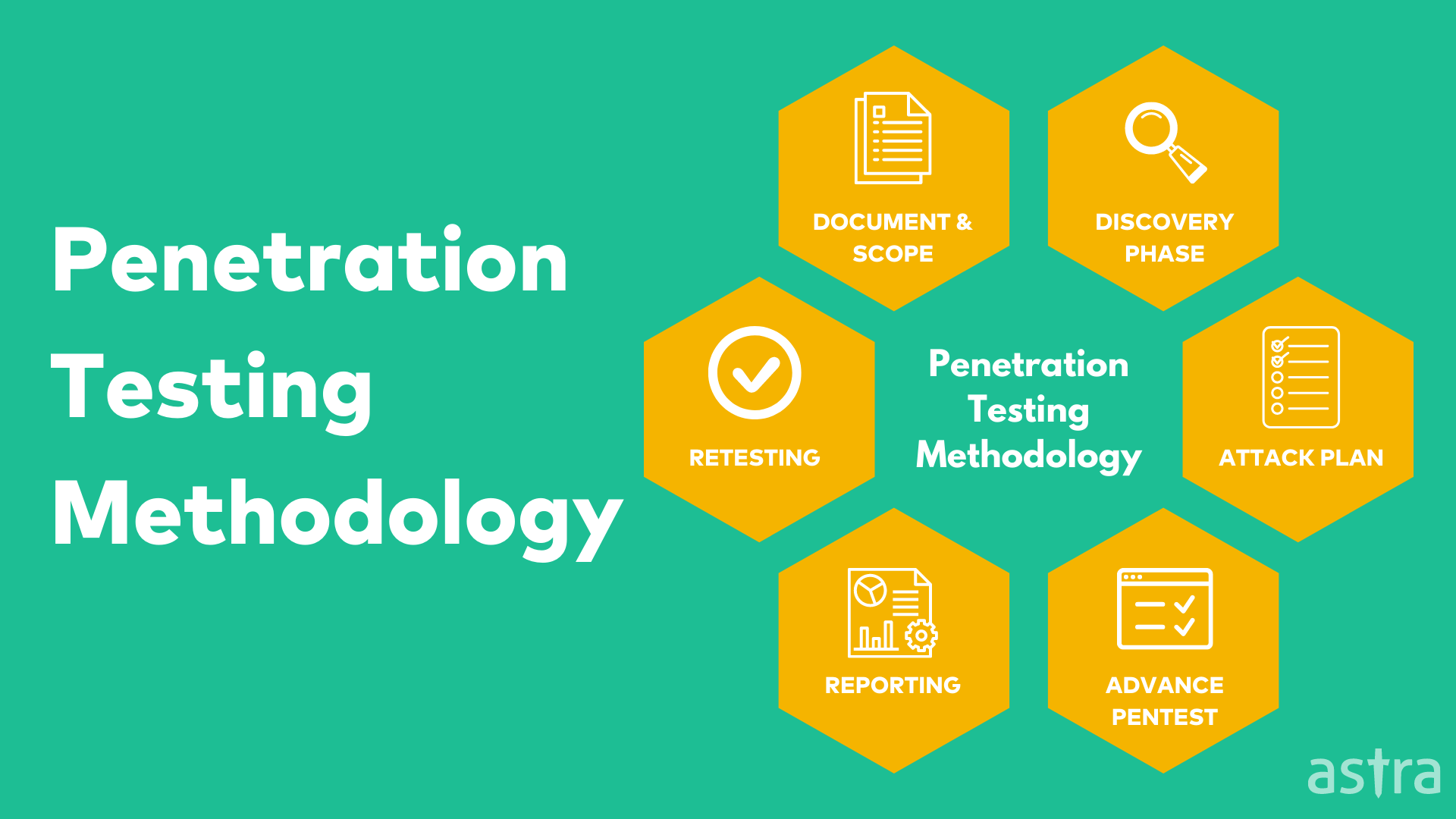Mobile apps have become an integral part of our daily lives, serving various purposes, from communication to entertainment and productivity. According to Statista, in 2022, 255 Billion Mobile Applications were downloaded worldwide.
As such, mobile app security is not just a buzzword; it’s a necessity in today’s interconnected world. To maintain a high level of security in mobile apps, various security standards have been developed.
One of the most commonly accepted standards in this domain is the OWASP Mobile Application Security Verification Standard (MASVS). Created by the Open Web Application Security Project (OWASP), it provides a comprehensive framework for securing your mobile applications.
Through this article, we will explore the following:
- The various types of mobile app security standards, including compliance standards and testing standards.
- Understanding the OWASP Mobile Application Security Verification Standard (MASVS) and its key components.
- Steps for implementing MASVS to enhance mobile app security.
- Impact of implementing MASVS.
Why is Astra Vulnerability Scanner the Best Scanner?
- Runs 8000+ tests with weekly updated scanner rules
- Scans behind the login page
- Scan results are vetted by security experts to ensure zero false positives
- Integrates with your CI/CD tools to help you establish DevSecOps
- A dynamic vulnerability management dashboard to manage, monitor, assign, and update vulnerabilities from one place.
- Helps you stay compliant with SOC2, ISO27001, PCI-DSS, HIPAA, etc.
- Integrates with Slack and Jira for better workflow management
- Trusted by the brands you trust like Agora, Spicejet, Muthoot, Dream11, etc.

What are the Various Types of Mobile App Security Standards?
Mobile app security is not just a crucial term in the cybersecurity space, but with cross-industry permeation, the existing mobile app security standards list can be categorized under 2 major categories, namely industry compliance standards and testing standards.
What are Compliance Standards?
Compliance standards define a set of regulations and requirements that mobile apps must adhere to. Although they were not originally designed for the cybersecurity industry, these globally acceptable industry-specific standards include lengthy sections on the protection, storage, and management of digital data including those collected on mobile applications.
Some notable examples include:
- ISO 27001: This international standard specifies the requirements for establishing, implementing, maintaining, and continually improving an information security management system.
- HIPAA (Health Insurance Portability and Accountability Act): HIPAA sets the standard for protecting sensitive patient data in the healthcare industry, ensuring the confidentiality, integrity, and availability of this information.
- GDPR (General Data Protection Regulation): GDPR is a European Union regulation that governs data protection and privacy for individuals within the EU. It imposes strict requirements on the handling of personal data.
What are Testing Standards?
Testing standards are a type of mobile application security standards that provide a framework for evaluating the security of mobile apps. They are specifically designed for the cybersecurity space and as such are centered around maximizing the implementation of suggested best practices to ensure maximum protection. Examples of such standards include
- OWASP ASVS (Application Security Verification Standard): This standard defines security controls and requirements that help assess the security posture of web applications. It includes various levels of verification for different app types.
- NIST SP 800-163: Issued by the National Institute of Standards and Technology (NIST), this document provides guidelines for managing and securing mobile devices in the federal government.
Understanding OWASP Mobile Application Security Verification Standard (MASVS)
What is OWASP?
The Open Web Application Security Project (OWASP) is a nonprofit organization dedicated to improving the security of software. It provides resources, tools, and knowledge to help you develop secure software.
One such example of OWASP’s commitment to the cause is the Mobile Application Security Verification Standard or MASVS, born out of a profound recognition of the unique set of challenges and vulnerabilities, demanding tailored security standards.
What is MASVS?
The OWASP Mobile Application Security Verification Standard (MASVS) is a framework that assists mobile app developers, testers, and organizations in designing and testing secure mobile applications. The mobile app security standard defines the security requirements and controls that mobile apps should implement ideally to protect against common threats. With constant revisions, OWASP ultimately aims to provide a consistent, reliable standard for mobile app security that can be universally adopted, fostering a safer mobile app ecosystem.
MASVS comprises several essential components, each playing a pivotal role in ensuring mobile app security:
1. Verification Levels (V1, V2, V3)
Also known as L1, L2, and L3, the verification levels of MASVS indicate the level of security that best suits your app’s needs. There are three primary choices:
V1 (Standard Security): The security equivalent of a sturdy padlock, this level is suitable for apps that handle less sensitive data or ones that don’t face excessively high-risk environments. It establishes a baseline level of security and is often used for apps like simple games or weather forecast applications.
V2 (Defense-in-Depth): V2 is the digital equivalent of a security system, complete with motion detectors and security cameras. It’s tailor-made for apps that deal with moderately sensitive data or face moderate security risks. Mobile banking apps or healthcare applications that store patient data are perfect fits for Verification Level 2.
V3 (Advanced Security): When you’re handling highly sensitive data or operating in an environment where the stakes are sky-high, V3 is the only option that truly fits the bill. Government and military apps or financial institutions’ mobile platforms often opt for V3 to ensure the utmost protection for their customers and partners.
2. Security Controls:
Security controls are the foundational building blocks of the standard. They offer specific mechanisms to address different aspects of mobile app security, covering areas such as data storage, communication, and authentication.
3. Security Requirements
Security requirements accompany each security control, serving as detailed guidelines for their effective implementation. These requirements function as a detailed roadmap that aims to ensure compliance by developers and organizations with industrial best practices to secure their mobile apps.
What are The Steps for Implementing MASVS?
Step 1: Assess the Current Security Posture:
Start by conducting a thorough evaluation of your existing mobile application security measures. This allows you to pinpoint any existing vulnerabilities or gaps in your current security practices. There are several tools available in the market that are exclusively designed to help your organization identify and analyze the same.

Step 2: Identify the Appropriate Verification Level:
The next step is to choose your verification level. Your choice among the 3 offered by the given mobile app security standard should align with your mobile app’s specific characteristics, such as data sensitivity, transactions, and potential risks. This allows you to mold the generic standard to your unique needs, also ensuring that the former neither overwhelms nor underwhelms.
Step 3: Implement Security Controls and Requirements:
Next, let’s implement the necessary security controls and requirements. This usually translates to encrypting sensitive data, establishing secure authentication methods, and strengthening communication channels. Keep the verification level and its constraints in mind to commensurate it only with the protective gear it requires.
Step 4: Monitor and Test Regularly:
Continuously monitor and test your mobile app to ensure it continues to meet MASVS requirements. Periodic security assessments, penetration testing, and code reviews are key here. By doing so, you can identify and address new vulnerabilities that may arise over time.
What is the Impact of MASVS?
As one of the leaders of the mobile app security standards list, it has had far-reaching benefits across various groups, but it has also faced its fair share of challenges. The former can be boxed into three major segments:
1. Benefits to Developers
- Enhanced Code Security: The cornerstone of MASVS lies in bolstering the security of code. As such, adhering to MASVS guidelines ensures that your developers are equipped with the knowledge and tools to craft code that’s inherently more secure.
- Reduced Vulnerabilities: By following the prescribed list of implementing necessary security controls and requirements, your developers are able to reduce the number of potential vulnerabilities in their apps significantly.
- Improved App Reputation: With a higher degree of security, the number of data breaches or security incidents can be minimized. This helps you gain the trust of your stakeholders thus strengthening your app’s reputation and user trust.
2. Benefits to Organizations
- Reduced Security Risks: MASVS equips your teams with the skill set to mitigate the risks associated with mobile app security breaches which can save your business from ginormous financial losses in lawsuits and lasting social impact.
- Regulatory Compliance: As discussed above, every region and industry has its own set of standards and guidelines, which are often accompanied by heft non-compliance fees. Following MASVS can help you in achieving compliance with your regulations, as the intent and impact in most cases are quite similar.
- Cost Savings: By thwarting security incidents and data breaches – through MASVS adherence – before they occur, your organization can avoid the hefty financial toll and resource drain associated with recovery efforts.
3. Benefits to Users
- Increased Trust: Knowing that their personal data is shielded against prying eyes and cyber threats encourages user adoption and fosters a sense of trust in your app which also helps you earn trust.
- Enhanced Privacy: Users entrust their personal information to apps, and MASVS compliance ensures that this data remains confidential and out of reach from malicious actors. This enhanced protection of their privacy is worth some brownie points for users seeking peace of mind.
- Protection from Malicious Apps: With the increasing adoption of MASVS, your industry is also able to foster a safer and more secure digital environment for your clientele, thus making it harder for malicious bots to take advantage of your tech stack as well.
4. Challenges in Implementing MASVS
While the advantages of embracing MASVS are evident, there are notable challenges to be mindful of:
- Resource Constraints: Smaller development teams or SMEs with limited resources often struggle with the allocation of time, expertise, and financial resources required for effective implementation. But as they say, necessity is the mother of innovation, thus limited resources often lead to some creative solutions.
- Integration with Development Lifecycle: Balancing security with project timelines within the development lifecycle often necessitates careful planning and integration of security measures into every phase of development, from concept to deployment. However, such a systematic approach also ensures the long-term viability and security of your mobile app.
How can Astra Help you?
Astra Security Suite offers a comprehensive set of security solutions for all things digital. Our unique combination of automated scanners and manual pentesting of your mobile application guarantees zero false positives.
Moreover, with our CXO-friendly dashboard, continuously evolving platform, and round-the-clock support in excess of easy tech stack integrations, our team offers an exhaustive report to help you get started in the right direction.
Conclusion
In a world where mobile apps play an increasingly central role in our lives, security is a top priority. The OWASP MASVS, as a leading mobile app security standard, provides an impactful framework for ensuring the security of mobile applications, offering benefits to developers, organizations, and users alike.
By following a structured approach while keeping the key components of verification levels, security controls, and requirements, every organization including yours can bolster its mobile app security significantly.
FAQs
What are the requirements for MASVS?
The requirements for the OWASP Mobile Application Security Verification Standard (MASVS) encompass secure data storage, proper cryptographic key management, secure communication practices, and strict adherence to platform-specific security features. These guidelines aim to ensure the robust security of mobile applications across various platforms.
















